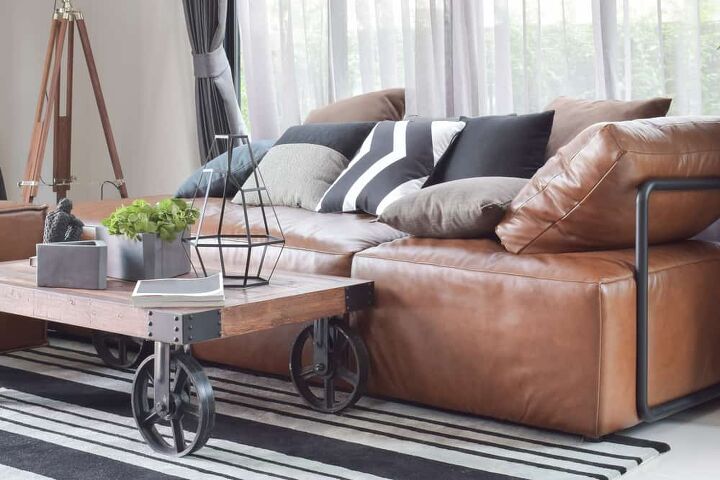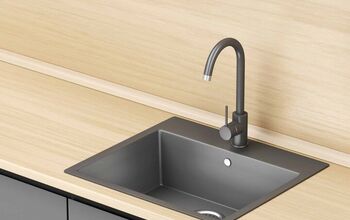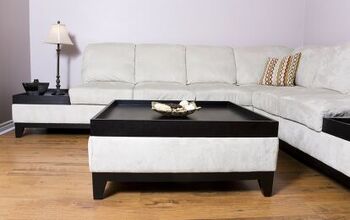How To Restore A Faded Leather Couch (Step-by-Step Guide)

Leather is a durable and classic material that has been used to make couches for decades. Just like any other material, it will wear over time and can even crack and fade. This usually happens due to environmental issues like excessive sunlight or dust.
If you have a faded leather couch that you want to restore, a leather balm is your best option. It can easily be applied and shows shocking results that make your couch look brand new. While it won’t fix cracks, it does bring life back to a leather sofa.
I wanted to share with you how you can restore a faded leather couch with step-by-step instructions. I’ve also included restoration tips and tricks that will have your sofa looking as good as new. Let’s jump into it by going over what supplies you’ll need.
Do You Need Furniture Reupholstery Services?
Get free, zero-commitment quotes from pro contractors near you.

What You’ll Need
- Gloves
- Polish or balm
- Clean cotton towels
- Leather conditioner
- Leather cleaner
- Elbow grease
Restoring a Faded Leather Couch
Step One: Prepping the Surface
Just like when you paint the walls in your home, you want to prep the area. For this, what I like to do is take a clean towel and wipe down the couch. Then do this again by adding in a high-quality leather cleaner.
Doing this gets rid of things like dust, dirt, and any sort of debris. Then you’ll take the leather conditioner and massage small amounts at a time into the surface. It’s important to do this in an even layer and to buff away any excess conditioner.
Step Two: Matching the Color
For the second step, you’ll want to take your leather polish or balm. If you’re working with a balm, it’s much easier to slowly match the color. Leather polish requires you to have an exact match from the start.
You can bring in a sample of your couch to get an exact match from a professional. Your other option is to buy multiple colors and combine them to get the perfect match. This step is essential because the last thing you want is a couch with spots that are darker or lighter than the rest.
To make sure the color you got blends in flawlessly, test it on a hidden area. When I do this, I like testing it on the back of the couch towards the bottom. This allows you to see the results without making a noticeable change to the piece of furniture.
Step Three: Apply the Polish or Balm
After you’re positive the color of the polish or balm matches well with the sofa; it’s time to apply it to any faded areas. Balm gets darker the more layers you add on. If you notice it’s not dark enough, after it’s cured, repeat the process until you get the desired results.
Apply the polish to the faded area using a cotton towel. It’s important that the towel is clean and that you’re using gloves while doing this. Just like a balm, the polish can get darker if you apply it in multiple layers.
Just like the leather conditioner, buff the area out and get rid of any excess. Let the balm or polish soak in for around 30 minutes. After this, you can check to see if the color is what you want and move forward accordingly.
Step Four: Buff it Out
The last step to get a beautiful looking leather sofa is to buff everything out. Take another clean towel and rub off any extra polish, and buff the couch. I can’t stress enough how important it is to use a clean towel each time to avoid polish transferring to other surfaces.
Look at the color and repeat the previous steps if you need a darker shade. To make sure your leather couch looks this good, regular maintenance is key. Apply the leather conditioner once every two months to keep it looking its best.
Leather Restoration Tips
Below you’ll find a handful of tips that make keeping any leather item you have looking as good as the day you bought it. Apply these tips to your regular household cleaning routine, and you’ll be set!
Cleaning the Couch
The best way to keep leather in great shape is to clean the surface. This removes dirt, debris, and even surface stains. There are leather shampoos and commercial cleaning products that work great to get the job done.
Apply the product in a steady, circular motion to ensure an even application. Start with thin layers and add more if needed. Wipe the area clean with a lint-free or microfiber towels, working in the same direction you applied the cleaner.
Scratch Prevention
It’s incredibly common for finished leather to become scratched over time. This can happen from pet claws, jewelry, and other sharp things. The best way to prevent scratches is to make sure the leather is well-conditioned.
If you already have scratches, going in with a conditioner can help restore moisture to the marks. It’s important to note that conditioners can often make leather darker. Be sure you do a patch test or know ahead of time whether or not it will affect the finish.
Condition, Condition, Condition
If you’ve read this far, you’ll have realized how important conditioning leather is. It’s done to restore any lost moisture, prevents scratching and cracking, and keeps the fibers flexible. For best results, you’ll want to use an all-natural leather conditioner from a trusted brand.
Conditioning is most optimally done with thin layers at a time. You can apply it with a lint-free cloth, a paintbrush, or even a sponge. Let it absorb for two to 24 hours before wiping the excess off with a clean towel.
Preventing Fades
Preventing fading in the first place will help keep your sofa looking brand new. Fading happens due to a number of factors. One of the main things that can cause it is excessive exposure to sunlight.
Depending on where your couch is located, you have a couple of options. You can add in curtains or blinds that prevent too much sunlight from hitting the couch in the first place. The other option is to move your furniture, so it’s not in the path of direct sunlight.
Dust and dirt can also cause fades. This is why it’s so important to clean your leather sofa regularly. This can be done with a clean cloth or a leather cleaning product.
Repairing Water Damage
One of the downfalls of having leather furniture is the chance of water damage. It can be hard to fix leather couches that have been soaked in water. The best thing you can do at the moment is to try and soak up as much of the water as possible.
Surprisingly, you’ll want to avoid using any heat on the wet leather, as that just causes more damage. Waiting until it dries is your best bet, but it can often leave the surface dry and brittle. If this happens, apply plenty of conditioner to bring moisture back to the surface.
Cost of Leather Repair Balm
While prices may depend on where you live, the chart below gives an average cost for leather repair balm. It’s relatively inexpensive, and a little goes a long way. It’s available in wipes, sprays, and jars.
| Product | Walmart | Target | Home Depot | Amazon |
| Leather balm | $15 | $8 | $10 | $13 |
Do You Need Furniture Reupholstery Services?
Get free, zero-commitment quotes from pro contractors near you.

Related Questions
How do you rejuvenate dry leather?
The easiest way to rejuvenate leather is to add a coat of leather conditioner. This should be done once every few months to keep your sofa looking gorgeous. Be sure to let the conditioner dry and wipe the surface down with a clean towel before using the couch again.
Is Vaseline good for leather?
If you’re wanting to soften the leather and prevent it from cracking, petroleum jelly is a great option. It can be used on all types of leather besides rawhide. It’s also essential to clean the area with a lint-free cloth while applying the jelly.
How do you rehydrate leather?
The best way to rehydrate later is to make a mixture using a quart of water, a tablespoon of soap, and a few drops of vinegar. Then, taking a cloth dipped in the moisture, wring it out and wipe down the entire sofa. Allow it to air dry completely before using the furniture again.

Kirstin is a passionate writer who loves helping people learn new things when it comes to home improvement. When she's not behind a keyboard, she enjoys DIY projects, crafts, spending time with her pets, and making videos. She hopes that with all she writes, someone is finding a solution to their home improvement needs.
More by Kirstin Harrington












![How Much Weight Can a 4×4 Support Horizontally? [It Depends!]](https://cdn-fastly.upgradedhome.com/media/2023/07/31/9070333/how-much-weight-can-a-44-support-horizontally-it-depends.jpg?size=350x220)














